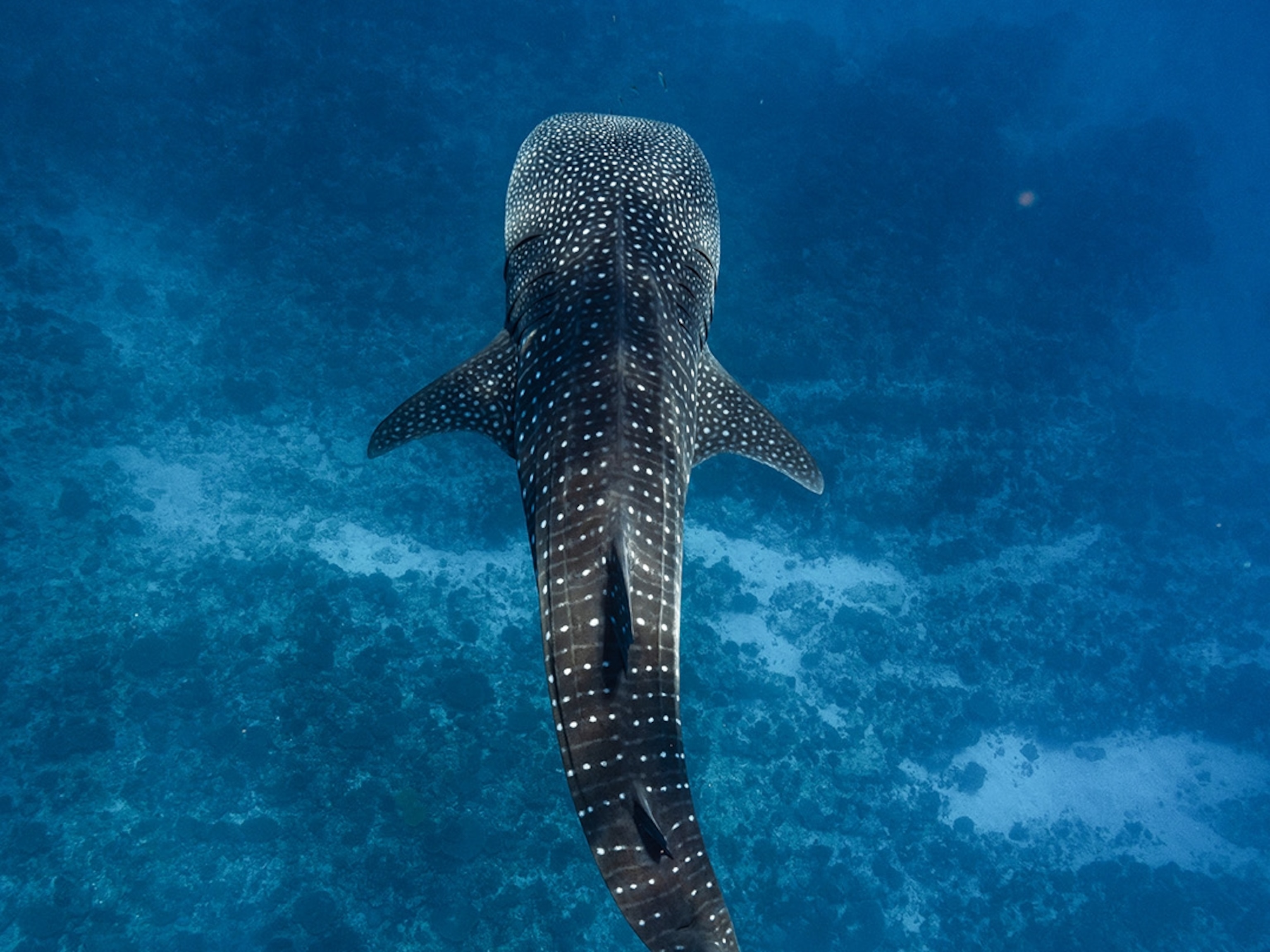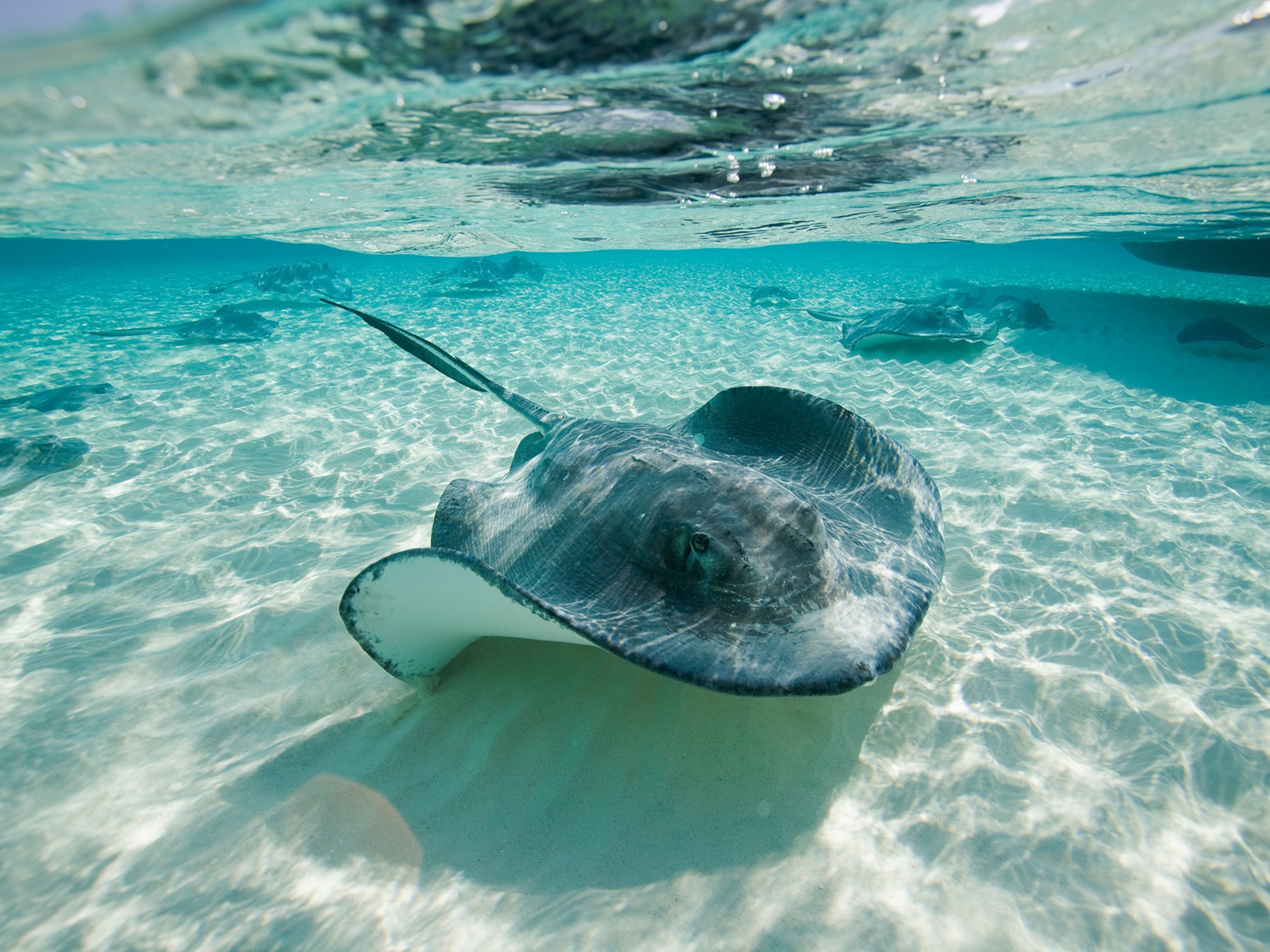
Stingrays Chew? Who Knew?
Mammals have been dethroned as world’s only true masticators.
Plenty of animals bite, but mammals were once thought to be the only ones to chew, at least as it’s usually defined: moving our toothy jaws up, down, and side to side to tear through tough food. But chew on this: the ocellate river stingray, a beautiful spotted fish from the Amazon River, also chews its food.
The discovery not only demonstrates that chewing isn’t special to mammals, but explains how rays, whose skeletons are made of soft cartilage rather than bone, can eat tough prey like shellfish. “I was fascinated by how animals with pliable skeletons can crush hard prey,” says Matthew Kolmann, a biologist at University of Toronto at Scarborough who reports the stingray’s ability Tuesday in the Proceedings of the Royal Society B. “And then I heard about these Amazon stingrays—the only one of the sharks or rays to feed on insects. How weird is that?”
Insect are covered in shells of chitin—a tough substance that can withstand a lot of stress before it cracks or breaks. The best way to destroy chitin isn’t to crush it, but to tear it. “And that’s what chewing does,” says Kolmann.
He filmed the stingrays with high-speed cameras as they tackled three kinds of prey—soft-bodied fish, tough shrimp, and very tough dragonfly nymphs.
The videos reveal that the rays usually pinch the shrimp and insect morsels on one side of the mouth. They then move the right and left halves of their jaws away from each other and then back together. They also move the upper and lower halves independently. Taken together, these movements create shearing forces that gradually ratchet their prey apart.
Is that chewing? It certainly seems so: They’re flexing and moving their jaws from side to side to pull their prey apart. This suggests that mammals and stingrays have independently evolved very similar solutions to the problem of breaking into tough mouthfuls.
Kolmann argues that we’ve been thinking about chewing too narrowly. Some biologists have billed it as one of the key innovations that allowed mammals to flourish, by dining well on insects, grasses, and other abundant sources of food. But it’s almost narcissistic to define chewing in the light of how mammals do it; many other groups of animals do something similar.
Birds and many other reptiles use a muscular stomach-like organ called the gizzard to grind their prey, and some even swallow stones that help with the dismemberment. Most fish use a second set of jaws in their throats—the pharyngeal jaws—to crush and grind their prey.
These styles of feeding seem weird to us because they disconnect the act of catching food from the act of destroying it. In humans, cows, and other animals, both actions are done by the same organs. “When you see a lion grab a gazelle, it captures the prey and eats it with the same set of jaws,” says Kolmann. But a bird might swallow a worm with its beak while pulverising it with its gizzard. A wrasse might snag food with one set of jaws and crush it with another.
And stingrays? They capture food with their whole bodies. By sitting close to the bottom of the sea or a river, and suddenly lifting the edges of their disc-shaped bodies, they create a suction that draws prey towards their mouths. Then, they chew.
Some biologists have argued that chewing requires complex, textured teeth like our molars. It makes sense: The bumpier the tooth, the easier it is to trap food between the bumps and valleys, and so rend it apart. But Kolmann found that another river stingray can reposition its teeth by flexing its jaw, effectively creating bumps and valleys even though each individual tooth is simple in shape.
“Processes that can be considered as types of chewing form this wide messy gradient that extends across the vertebrate tree of life,” says Kolmann.





